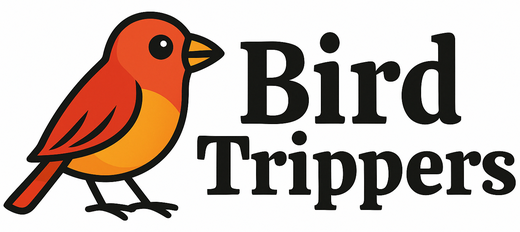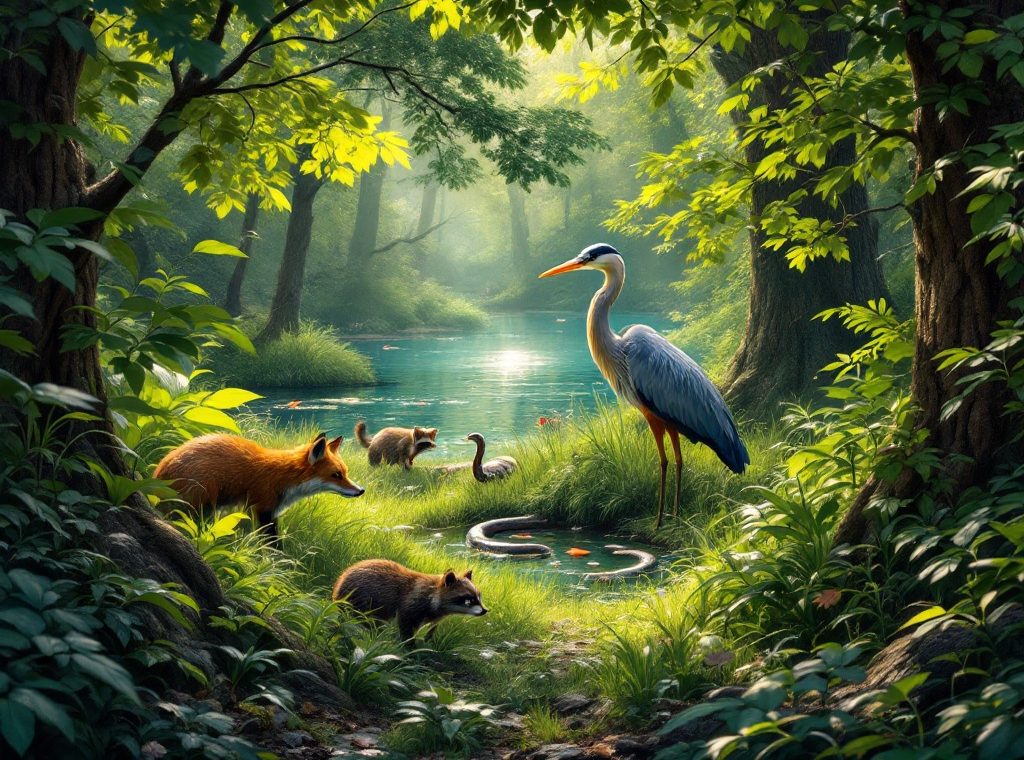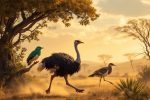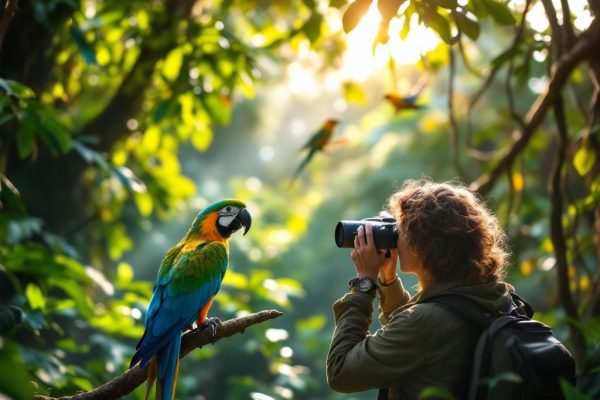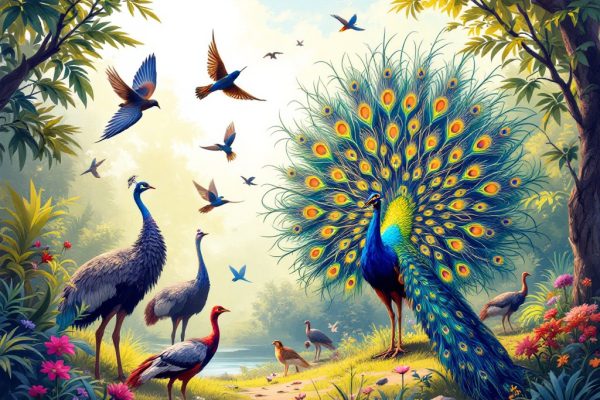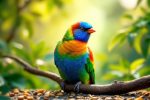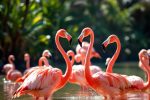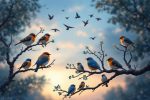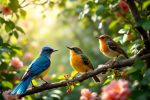What Animals Eat Birds: Dangers that Wait in the Forest
Discover the surprising world of bird predators, from the common house cat to the unexpected deer. Learn how foxes, raccoons, snakes, and even fish impact bird populations. Explore the crucial role of predator-prey dynamics in bird conservation and discover how human actions, like habitat destruction and introducing non-native species, significantly affect these delicate balances. Delve into this fascinating exploration of the natural world and uncover how we can help protect our feathered friends. Read on to understand the challenges birds face and how we can contribute to their survival.
Important information
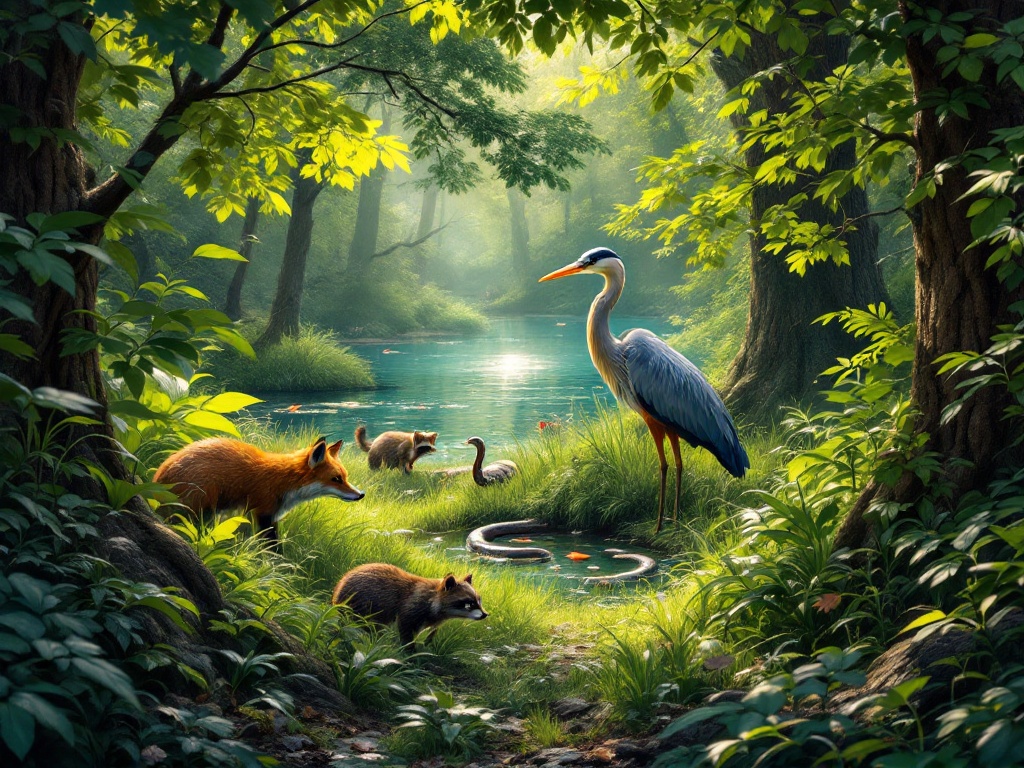
- Cats (domestic and feral) are a major threat to birds, killing an estimated 1.3 to 4 billion annually in the US.
- Raccoons, foxes, and snakes are common nest raiders, targeting eggs and young birds. Raccoons often climb trees for nests, while foxes target ground nests.
- Birds of prey, such as hawks, eagles, falcons, and owls, are natural predators of other bird species.
- Habitat loss and changes due to human activity increase bird vulnerability by concentrating them in smaller areas and disrupting nesting sites.
- Human-introduced predators (like cats) and land-use changes that attract other predators (like raccoons to garbage) further disrupt the natural predator-prey balance.
Understanding Predators of Birds
Birds face many predators, impacting their survival. Common predators include mammals, reptiles, other birds, and even some fish, amphibians, and large mammals.
Mammalian Predators
Mammals like foxes, coyotes, and raccoons frequently raid nests for eggs and young birds. Domestic cats are a significant threat, especially in urban and suburban areas, killing a substantial number of birds.
Reptilian and Avian Predators
Snakes pose a danger to birds, particularly those nesting on or near the ground. Birds of prey, including hawks, eagles, falcons, and owls, are natural predators of many bird species.
Other Predators
Surprisingly, even creatures not typically associated with bird predation have been observed hunting birds. These include fish, frogs, deer, and baboons, highlighting the diverse range of threats birds encounter.
Understanding Predator-Prey Dynamics
Understanding these predator-prey relationships is essential for implementing effective bird conservation strategies.
Domestic and Feral Cats: Leading Bird Predators
Cats, both domestic and feral, kill a significant number of birds, estimated between 1.3 and 4 billion annually in the United States. Feral cats, living and breeding in the wild, hunt freely and pose a greater threat. These adept predators prey on various bird species, disrupting the ecological balance and raising concerns among conservationists.
Raccoons: Nocturnal Nest Raiders
Raccoons are nocturnal mammals known for raiding bird nests. They skillfully climb trees to reach eggs and chicks, significantly impacting bird populations, especially ground-nesting species. However, raccoons are opportunistic omnivores with diverse diets. They consume insects, fruits, and nuts, easily switching between food sources. Raccoons also forage in urban environments, exploiting available food.
Squirrels: Egg and Chick Predators
Squirrels, notorious bird nest raiders, are omnivores with a diet encompassing both plants and animals. Their agility and climbing prowess make tree-bound nests easy targets. They consume eggs and chicks for valuable nutrients. This behavior poses a significant threat to vulnerable bird populations, as a single squirrel can decimate multiple nests in a single season. Beyond eggs and young birds, squirrels also enjoy a varied plant-based diet of nuts, seeds, and fruits.
Snakes: Silent Nest Invaders
Snakes are silent predators that often target vulnerable bird nests. They consume both eggs and chicks, demonstrating impressive climbing skills to reach nests high in trees and shrubs. While many snake species specialize in these smaller meals, larger snakes pose a threat even to adult birds, significantly impacting bird populations.
Coyotes and Foxes: Forest Bird Hunters
Coyotes and foxes are predators that hunt birds, which affects bird populations in forests and mountains. Foxes often hunt birds that nest on the ground, while coyotes eat a wider variety of birds. This predation helps keep the ecosystem balanced.
Birds of Prey: Natural Hunters
Falcons, known for their speed and agility, are adept at catching birds mid-flight.
Eagles, with their powerful talons and beaks, hunt larger avian prey.
Hawks frequently target land fowl.
Owls, the nocturnal hunters of this group, rely on exceptional hearing and night vision.
Each species possesses unique adaptations that make them effective predators, thriving in their respective habitats.
Falcons: Speedy Aerial Predators
Falcons are renowned for their swift hunting prowess. Diving at speeds exceeding 200 mph, these raptors are incredibly efficient predators with exceptional eyesight. Their prey consists mainly of birds, which they capture mid-flight using diverse techniques. Sometimes, they execute a swift strike from above. Other times, a high-speed chase ensues. It’s a breathtaking display of aerial mastery.
Eagles: Powerful Hunters of Larger Birds
Eagles are powerful hunters that often target larger birds, such as gulls. Their incredible eyesight allows them to spot prey from high above, easily surveying the landscape. Sharp talons and strong beaks help them quickly capture and dispatch their meals. Remarkably strong, eagles can even carry prey heavier than themselves, which is a true testament to their power.
Hawks: Targeting Land Fowl
Hawks are renowned for their hunting prowess, particularly when it comes to chickens and turkeys. From a high perch, they scan the terrain for unsuspecting prey. A swift, powerful dive allows them to efficiently capture their target. Sharp talons and beaks make quick work of subduing and consuming these birds. Their diet isn’t limited to fowl, however; they also prey on small mammals and even insects. Hawks’ hunting strategy is a fascinating display of aerial skill and predatory instinct. They utilize their keen eyesight to spot potential meals from considerable distances. Once a target is identified, they execute a rapid descent, using their sharp talons to seize and secure their prey. While chickens and turkeys are common targets, their diet also includes a variety of other animals, showcasing their adaptability as hunters.
Owls: Nighttime Hunters
Owls are nocturnal birds of prey, using their exceptional night vision to hunt. Their prey often consists of young birds, which helps maintain a natural balance in bird populations.
Uncommon Predators
Largemouth bass hunt birds near the surface of the water.
Bullfrogs and other frogs also consume smaller birds.
Baboons, known for their varied appetites, occasionally prey on birds and their eggs.
Even deer, surprisingly, supplement their diet with bird eggs and nestlings, likely to obtain calcium.
Fish: Aquatic Threats to Birds
Large predatory fish, such as pike, walleye, and catfish, are known to hunt birds. These fish often target birds like ducks, grebes, and loons in shallow water, where the birds’ swimming and wading make them vulnerable. The fish typically ambush these birds, waiting patiently beneath the surface before striking swiftly.
Frogs: Preying on Smaller Birds
Large frogs, often found hunting near water sources where small birds congregate, will opportunistically prey on them. While not specifically targeting birds, these frogs will consume them as part of their varied diet if the opportunity arises.
Baboons: Opportunistic Eaters
Baboons are opportunistic omnivores with a diverse diet. Their food sources include birds, eggs, and nestlings. This predatory behavior significantly impacts local bird populations, especially ground-nesting species and those roosting in accessible locations. African studies confirm this vulnerability to baboon predation.
Deer: Unexpected Bird Predators
White-tailed deer, primarily plant-eaters, have surprisingly been observed eating baby birds, posing a threat to nesting birds. This uncommon behavior highlights the intricate relationships within nature, demonstrating how deer, typically herbivores, can influence bird populations and add complexity to predator-prey dynamics. In areas with dense deer populations, birds may face heightened risks. This unusual dietary behavior merits further investigation.
Impact of Nest Raiding on Bird Populations
Nest raiding poses a significant threat to bird populations, impacting both their reproduction and survival. Predators, such as raccoons and foxes, are major contributors to nest loss. Raccoons, with their climbing ability, often target nests located high in trees. Foxes, on the other hand, frequently raid ground nests. This predation significantly reduces the number of fledglings, ultimately harming overall bird populations. The problem is further exacerbated in areas with high predator density and limited nesting sites. Reptiles, like snakes, also contribute to nest loss, further diminishing bird numbers. Studies have directly linked increased nest raiding to declining bird populations in specific regions, highlighting nest vulnerability as a crucial factor in avian survival.
Nest Predators and Their Targets
- Raccoons: target nests high in trees.
- Foxes: raid ground nests.
- Snakes: contribute to nest loss, especially on the ground.
Factors Exacerbating Nest Loss
- High predator density: increases the likelihood of nest predation.
- Limited nesting sites: makes nests easier to find and access.
Vulnerability of Bird Nests
Bird nests face constant danger from predators. Raccoons, notorious nest raiders, are a particular threat, consuming eggs and chicks under cover of darkness. Foxes also target nests, impacting bird populations. Snakes, silent and deadly, prey on vulnerable eggs and young. Even squirrels contribute to nest predation, eating both eggs and chicks. This predation significantly affects bird survival, making conservation efforts, especially nest protection, crucial. Here’s a breakdown of common nest predators:
- Raccoons: these masked bandits are adept at climbing and raiding nests at night, often consuming both eggs and chicks.
- Foxes: opportunistic hunters, foxes will target bird nests on the ground and in low-lying shrubs, impacting bird populations.
- Snakes: their ability to slither into nests undetected makes them a significant threat to eggs and young birds.
- Squirrels: while primarily herbivores, squirrels will also consume eggs and chicks when the opportunity arises.
Nest predation significantly impacts bird survival rates, emphasizing the importance of conservation efforts. Protecting nests from these predators is crucial for maintaining healthy bird populations.
Nest Predation by Mammals and Reptiles
Raccoons, known for their climbing abilities, can reach nests even high in trees, posing a constant threat to bird nests.
Ground nests are particularly vulnerable to foxes, which often dig them up in search of food.
Snakes, such as rat snakes and black racers, are also common predators of bird eggs and nestlings.
Weasels, with their slender bodies, can squeeze into tight spaces, making them a significant danger to cavity-nesting birds.
Opossums, being opportunistic feeders, will also raid nests whenever the chance arises.
Human Impact on Bird Predation
Domestic cats pose a significant threat to birds, killing vast numbers annually. Introducing non-native predators, like cats, disrupts the delicate ecological balance. Furthermore, land-use changes can increase the presence of opportunistic hunters like raccoons, drawn to human-generated food sources such as unsecured garbage.
Habitat loss, driven by deforestation and urbanization, further compounds the problem by concentrating birds into smaller areas, increasing their vulnerability to predators. Moreover, human-induced climate change is altering bird migration and nesting patterns. This sometimes creates discrepancies between their needs and available resources, which elevates predation risk.
Domestic Cats and Their Effect on Wild Birds
Domestic cats pose a significant threat to wild birds, killing billions each year in the United States alone. This predation has a disproportionate impact on ground-nesting birds and smaller species. Responsible pet ownership can lessen this impact. Keeping cats indoors is crucial, along with using bells and supervising outdoor time. These simple steps can save countless birds and are essential for avian conservation.
Impact on Birds
Domestic cats kill billions of wild birds annually in the U.S., significantly impacting ground-nesting birds and smaller species.
Mitigation Measures
- Keep cats indoors.
- Use bells on collars.
- Supervise outdoor excursions.
Habitat Changes and Predator-Prey Relationships
Urban sprawl and land use changes decimate bird habitats, dramatically altering the balance between predator and prey, and ultimately causing bird populations to plummet. Reduced forest cover, for instance, leaves birds vulnerable to predators such as cats. Shifts in vegetation also disrupt nesting sites, impacting breeding success and increasing the risk of predation from animals like raccoons and snakes. This heightened predator exposure in altered habitats contributes significantly to declining bird numbers. For example:
Loss of Forest Cover
Reduced forest cover increases the vulnerability of birds to predators like cats., making it easier for them to hunt and reducing safe spaces for birds to hide and nest.
Shifts in Vegetation
Changes in vegetation patterns disrupt nesting sites and increase the risk of predation by animals like raccoons and snakes. These shifts impact breeding success and expose nests to predators.
